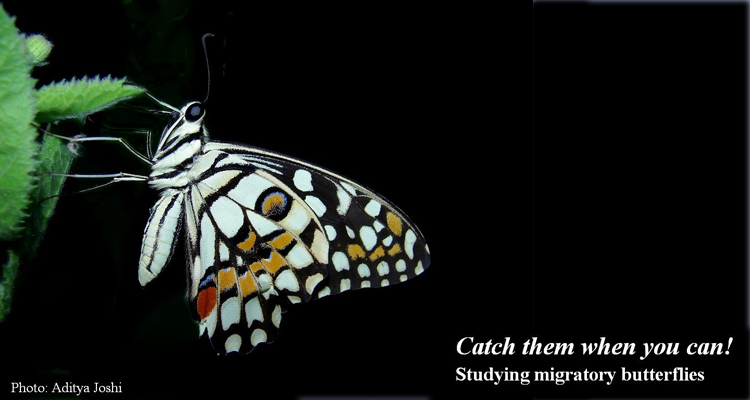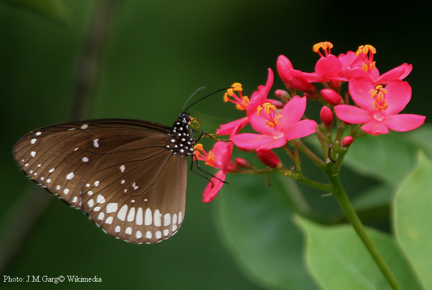Catch them when you can!
In the early days of June this year, NCBS students traveling to and from Mandara hostel noticed that large number of butterflies were often seen flying in the same direction. Intriguingly, some of the long-timers recalled that they had observed this beautiful sight every year, suggesting some kind of migratory ritual. Now the mystery is being addressed by NCBS scientist Sanjay Sane and his enthusiastic team.
Sanjay and his group are primarily interested in how insect flight is regulated. In this case, the migratory insects face many challenges as they have to navigate vast distances and constantly maintain their orientation and air speed in the face of highly variable winds.
According to Sanjay, “The most daunting challenge in experiments regarding insect flight is our lack of information about the presence or absence of motivation for an insect to fly”. Migratory insects are obviously a model system for experimentation as their flight motivation is established. Sanjay has studied migratory moths in the past, and as he described some of his experiments in Panama, chasing migratory moths along the waterways, it sounded straight out of Anaconda, complete with boat chases.
Their major findings were that antennae are not the regulators of air speeds of migrating moths but they are crucial in orienting the moths in the right direction during migration (for the paper: read here). Propelled by these observations and the availability of migratory butterflies on campus, Sanjay and his group decided to test some of their hypotheses. Subhashini, Arvind, and Samada went about trapping the butterflies. Their secret weapon in this quest was Mr. Kemaparaju who they all hero worship for his amazing ability to identify the butterflies in a fraction of a second. The butterflies that they trapped were Blue Tigers, Common Limes and Common Indian Crows. These generally migrate towards east about the end of May and early June, most probably to keep ahead of the downpours of the monsoon season.
Already the group has made some interesting preliminary observations, in which the migratory butterflies were trapped in a black box and then released after they had, presumably, lost their bearings. Almost all the butterflies very quickly reoriented themselves and continued in their original direction. The group has now started exploring what roles the butterflies’ antennae, and inputs from vision, play in this direction finding.
Sanjay and his team intend to make these experiments an annual exercise. Don’t be surprised to see them running across the lawns and through the bushes – who can resist the call of Nature, in such a beautiful guise?



Comments
Post new comment